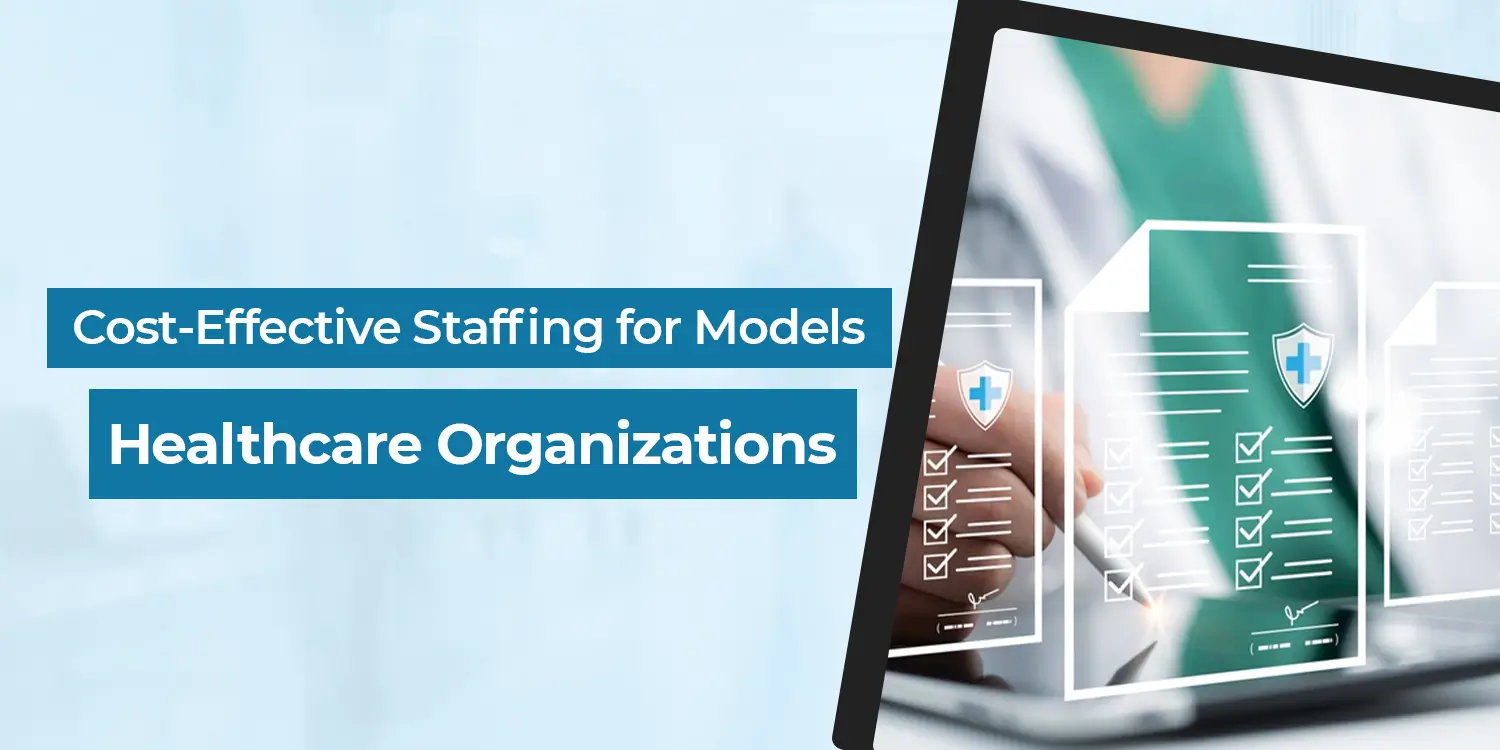Running a healthcare organization today is no easy task. With rising patient demands, fluctuating budgets, and the never-ending challenge of balancing quality with cost, hospitals and clinics are under pressure to rethink how they manage their teams. This is where staffing models for healthcare come in. The right approach to staffing not only keeps operations smooth but also helps reduce labor costs, improve patient outcomes, and boost employee satisfaction.
In this blog, we’ll explore different staffing strategies, their advantages, and how JR Enterprise helps healthcare organizations implement cost-effective workforce management solutions.
Why Staffing Models Matter in Healthcare
Unlike other industries, healthcare requires a delicate balance between efficiency and quality. Every nurse, doctor, or technician directly impacts patient outcomes. That’s why healthcare staffing solutions must be carefully designed. Inefficient scheduling can lead to overworked staff, high turnover, and even lower standards of care. On the other hand, the right nurse staffing models and scheduling strategies create a healthier workplace and more reliable patient care.
Simply put: staffing models aren’t just about filling shifts they’re about shaping the backbone of a healthcare system.
Key Benefits of Cost-Effective Staffing Models
Healthcare organizations that adopt efficient staffing strategies often see measurable improvements in both finances and patient care. Some of the main benefits include:
- Healthcare labor cost reduction: By optimizing scheduling, hospitals cut down on overtime expenses and reliance on costly temporary staff.
- Better patient outcomes: Adequate staffing ensures timely care, reducing medical errors and improving recovery rates.
- Lower turnover rates: Staff who feel supported and not overburdened are more likely to stay long-term.
- Greater operational agility: Flexible staffing allows facilities to respond quickly to surges in patient demand.
At JR Enterprise, we specialize in tailoring staffing frameworks that align with the specific needs of each organization, whether it’s a small clinic or a large hospital system.
Popular Staffing Models for Healthcare
There’s no one-size-fits-all when it comes to staffing. Different healthcare facilities have different needs, and that’s why exploring various models is key. Let’s look at the most common staffing models for healthcare today.
1. The Traditional Model
This is the most straightforward approach assigning staff based on fixed shifts and ratios. While simple to manage, it doesn’t always account for fluctuations in patient load and can lead to inefficiencies.
2. Patient-Centered Staffing
Here, assignments are based on patient acuity levels rather than fixed ratios. For example, one nurse may handle fewer patients if they require intensive care. This ensures efficient staffing in hospitals, where resources match patient needs.
3. Team-Based Model
In this approach, care is delivered by teams that include nurses, aides, and other support staff. It encourages collaboration, reduces burnout, and allows for more balanced workloads.
4. Float Pool Model
Instead of hiring temporary staff during shortages, hospitals maintain a pool of trained professionals who can “float” between departments. This strategy lowers dependency on expensive agency staff and enhances flexibility.
5. Flexible Scheduling with Technology
Modern medical staff scheduling strategies rely heavily on digital tools. Automated systems can predict patient volumes, optimize schedules, and reduce costly last-minute changes. JR Enterprise often integrates such technology into its solutions for maximum efficiency.
The Role of Technology in Staffing Solutions
Technology has transformed how healthcare organizations approach workforce management. Smart scheduling systems use data to predict patient inflow, track staff availability, and even flag potential compliance issues. With these tools, administrators can reduce unnecessary overtime, balance workloads, and cut down on labor costs—all while maintaining high standards of care.
For example, predictive analytics can identify seasonal peaks in patient admissions, allowing administrators to plan ahead. This type of cost-effective workforce management ensures that staffing shortages are addressed before they become critical issues.
How JR Enterprise Supports Healthcare Staffing
At JR Enterprise, we understand the financial and operational challenges healthcare organizations face. Our solutions are designed to be both practical and innovative, ensuring that hospitals and clinics can achieve their goals without compromising care quality.
Here’s what we provide:
- Customized staffing frameworks that fit the size and specialty of the healthcare facility.
- Advanced scheduling tools that make shift planning faster, fairer, and more efficient.
- Consulting services to help organizations adopt sustainable nurse staffing models and reduce unnecessary expenses.
- Ongoing support and analysis to ensure staffing remains aligned with both budget and patient needs.
Our mission is simple: help healthcare providers build a workforce that is flexible, efficient, and cost-effective.
Best Practices for Cost-Effective Staffing in Hospitals
If you’re looking to refine your staffing approach, here are a few proven strategies:
- Leverage data-driven scheduling – Use technology to forecast patient demand and align staff availability.
- Cross-train employees – Flexible staff who can handle multiple roles help cover unexpected absences without added costs.
- Adopt float pools – Reduce reliance on external agencies by training a pool of internal staff ready to step in as needed.
- Promote staff wellness – A healthy, motivated workforce leads to lower turnover and fewer sick days.
- Regularly review staffing models – Healthcare is dynamic; updating your model ensures it continues to deliver value.
Final Thoughts
In today’s healthcare environment, cutting costs without cutting quality is the ultimate goal. Effective staffing models for healthcare are the key to striking this balance. With the right mix of strategy, technology, and flexibility, organizations can achieve healthcare labor cost reduction while maintaining exceptional patient care.
At JR Enterprise, we pride ourselves on delivering tailored healthcare staffing solutions that put people first both patients and providers. By adopting smart medical staff scheduling strategies and efficient staffing practices, healthcare facilities can thrive in a demanding and ever-changing landscape.


One Comment